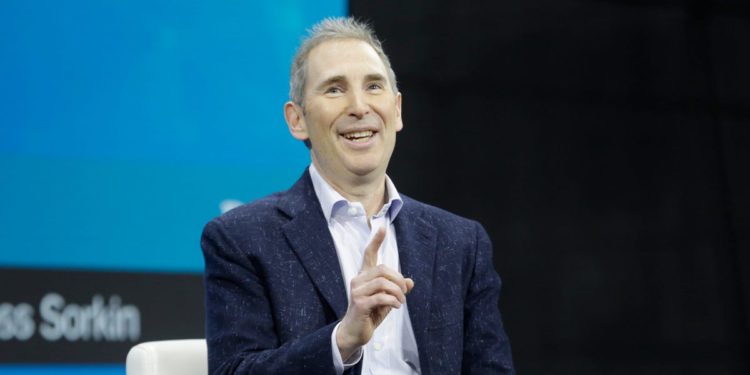Amazon has rosy projections for its Rufus AI shopping assistant.
According to an internal planning document obtained by Business Insider, Amazon expects Rufus to indirectly contribute over $700 million in operating profits this year.
The outlook is part of a metric called “downstream impact,” an internal financial figure Amazon uses to measure a product or service’s potential to generate additional consumer spending across Amazon’s vast offerings.
For example, Rufus’ product recommendations can lead to more purchases on Amazon’s marketplace — and an increase in its DSI. Rufus, a free service that answers everything from product details to special promotions, generates no direct revenue.
Based on this metric, Rufus lost an estimated $285 million in 2024. By 2027, however, it is expected to reach $1.2 billion in DSI profit contributions, the document showed. The estimates, after operating costs and server payments, include the income from ads placed within Rufus’ responses to user inquiries.
The bullish forecast may explain why Amazon is aggressively expanding Rufus and its other AI search offerings. Amazon’s leadership previously told employees that such AI projects are “absolute” top priorities.
Rufus, which launched in February 2024, has received mixed reviews from early users, but Amazon continues to invest in this space. Just last week, Amazon unveiled another AI-powered shopping discovery app called Interests. Last year, the company disclosed that Rufus answered “tens of millions” of customer questions in its first six months of operation.
It also shows how Amazon justifies its investment in one of its flagship AI products, even as DSI has received more scrutiny lately.
Amazon’s spokesperson declined to comment.
‘Positive lift on downstream spending’
To be sure, Rufus’s DSI forecast is small for Amazon, given the company’s $68.6 billion in total operating income last year. But early results indicate Rufus has huge potential with more room to grow.
The document said initial results showed customers using Rufus had a “positive lift on downstream spending,” and the impact only increased with more engagement.
Amazon has significant expansion plans for Rufus.
This year, Amazon expects $711.7 billion worth of products on its site to be eligible for Rufus’s many features, like product recommendations and comparisons, up from $164 billion in 2024, according to the document. That number is expected to reach $849.8 billion in 2027.
Amazon also wants to roll out Rufus to at least 13 international marketplaces this year, the document said. Currently, Rufus is available in the US, the UK, and India, and a handful of European countries.
The document said Amazon plans to fivefold the size of the AI model powering Rufus, internally called Shopping LLM, to improve the quality of its answers. The increased model parameters to Shopping LLM were also factored into DSI, but it is unclear when this will be implemented. With the planned improvement, Amazon hopes to launch a new service that leverages Rufus to provide a wider selection and “seamlessly purchase on behalf of the customer,” it added.
Rufus is already becoming more prevalent across Amazon. In recent weeks, some Amazon sellers who used the Rufus app discovered an update that auto-pops up Rufus when they use trigger phrases like “how to” or “what is” in the search bar.
For some products, Rufus automatically launched with its own response before search results showed up. Amazon also started testing ad placements within Rufus’s responses, Adweek reported in September.
‘Personalize more’
Amazon isn’t the only retailer with a homegrown AI shopping assistant. Others, like Walmart, Target, and Instacart, have launched their own AI-powered search apps in recent months.
These apps may still be in their infancy. A recent survey by e-commerce analytics firm Profitero showed that just 10% of US customers used a retailer’s AI chat assistant when searching for products. By comparison, 37% of shoppers used the search bar on the retailer’s websites or apps, and 29% used promotion and deal pages.
For Rufus, the other challenge is negative reviews.
Andrew Hamada, a former Amazon employee who now runs seller agency Reason Automation, wrote on Linkedin last month that Rufus misses basic catalog information and often gives inaccurate answers.
“In our experience, Rufus rarely works,” he wrote.
There’s also the question of DSI’s true value.
Amazon’s DSI is not the most scientific metric, and several Amazon employees who spoke on the condition of anonymity because they were not authorized to speak to the press, have raised questions about the fuzzy math behind the numbers.
For instance, it was never clear whether Prime Video or Amazon’s shipping team should claim more DSI for the Prime membership revenue, which offers both services as a perk, one of the people said. Recently, Amazon has been deemphasizing Alexa’s DSI metric, the Wall Street Journal previously reported.
Still, Amazon’s retail CEO Doug Herrington remains a strong supporter of Rufus. During an internal all-hands meeting earlier this year, Herrington said AI-driven “personalization” is a major focus area for Amazon, mentioning Rufus and other search features as examples.
“AI is really allowing us to personalize more and more of the shopping experience on Amazon,” Herrington said.
Do you work at Amazon? Got a tip? Contact this reporter via email at [email protected] or Signal, Telegram, or WhatsApp at 650-942-3061. Use a personal email address and a nonwork device; here’s our guide to sharing information securely.
The post Amazon’s internal forecast suggests a $700 million financial gain from its AI shopping assistant Rufus appeared first on Business Insider.



















